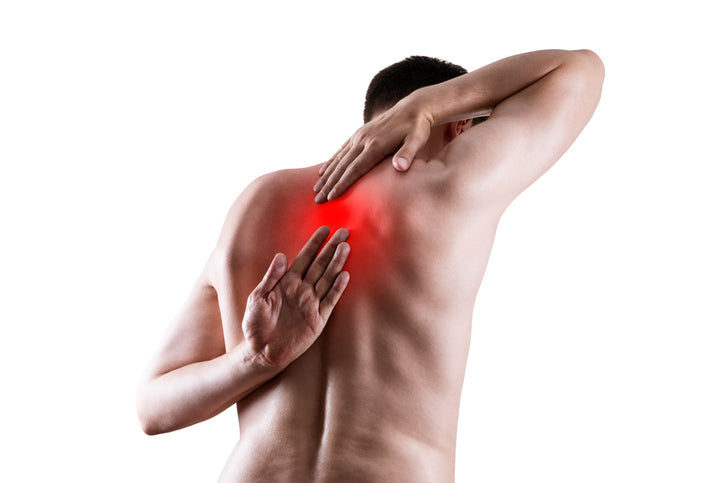What Relieves Upper Back Pain?

The upper back is protected and resistant to injury and pain, but it’s not uncommon to experience upper back pain even with the best protection. Find out more about upper back pain and how you can treat it at home.
What Is Upper Back Pain?
Upper back pain is your body’s way of telling you that something is not right. It can come in different forms, ranging from a slow-burning sensation to a stabbing, sharp pain.
What Are the Causes of Upper Back Pain?

The two most common causes of upper back pain are muscular irritation and joint dysfunction.
Your upper back is covered with multiple muscle groups to help you move and protect your upper back. Because you use these muscles every day, the upper back is prone to developing strains of tightness. Muscular irritation in the upper back comes from a lack of strength in your back muscles or overuse injuries.
In your upper back, there are 17 joints. Each vertebra is cushioned with a disc, and whether it’s due to injury, prolonged stress caused by poor posture, or from aging and time, those discs can wear down or malfunction, which will cause pain.
What Helps Relieve Upper Back Pain?
Back pain is uncomfortable and annoying, but it doesn’t have to be constant. So, what relieves upper back pain? If you are cautious and give your back time to heal with gentle stretches and exercise, most back pain will resolve within two weeks.
Here are a few upper back pain remedies you can try to help relieve your upper back pain. While these activities can help relieve your back pain, if you go too hard or too fast with any of them, there is a chance that you will cause additional damage to your back. Remember, while your back is healing, you should be gentle with your back and avoid pushing, pulling, or twisting so you don’t aggravate your injury.
Upper Back Pain Exercises

Here are a few weight lifting exercises to strengthen your upper back muscles and relieve upper back pain.
Upper Back Pain Stretches
If you are not accustomed to it, a shoulder blade squeeze may feel slightly uncomfortable at first or feel difficult to isolate and control the necessary muscles to perform correctly. Remember to be patient and take your time when learning this stretch.
When Should You See a Doctor?
With enough rest and time, most back pain will resolve on its own. However, you should go to a doctor for help if your back pain lasts more than two weeks or if the pain keeps you from participating in your normal daily activities.
If your back pain is ever associated with a fever, the pain starts to travel to your arms or legs, you have problems controlling your bowels, or if the pain was caused by an accident, you should immediately speak with a doctor.
Use an NMES Unit for Back Pain Relief

One of the best ways to strengthen your back muscles and relieve back pain without the fear of overextending and causing more damage is a neuro-muscular electrical nerve stimulation (NMES) unit. An NMES unit sends electrical impulses directly to the muscles in your back to help strengthen your back muscles and assist in the healing process.
An NMES doesn’t deaden your pain; it helps treat and relieve your pain. An NMES is not a TENS unit. A transcutaneous electrical nerve stimulation (TENS) unit only sends electrical impulses to the top layer of skin and muscle and deadens the pain in your back.
Get your NMES unit for 50% off from NeuroMD. Contact us today if you have any questions or want to learn more about how an NMES unit can help relieve your existing pain and help prevent future injuries.